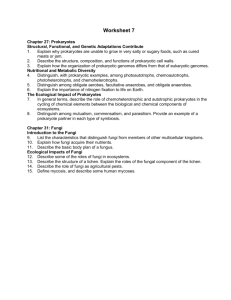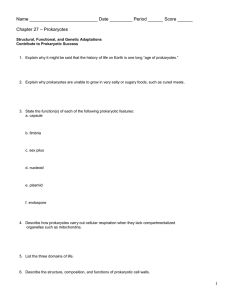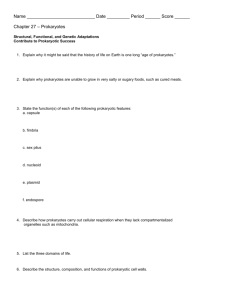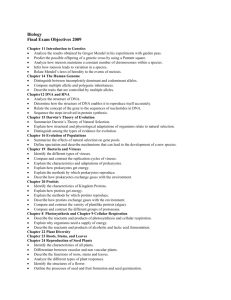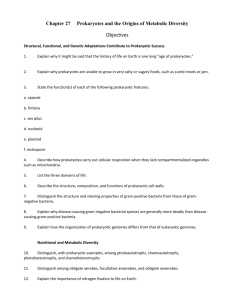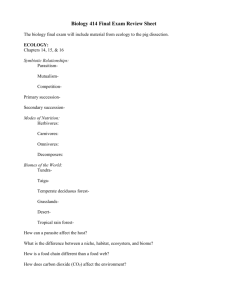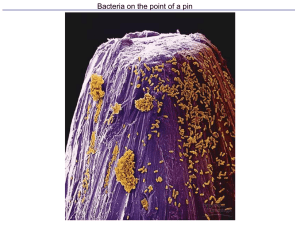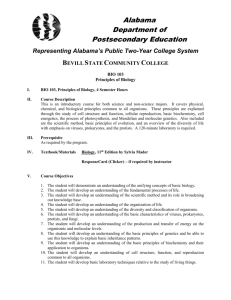Study Guide
advertisement
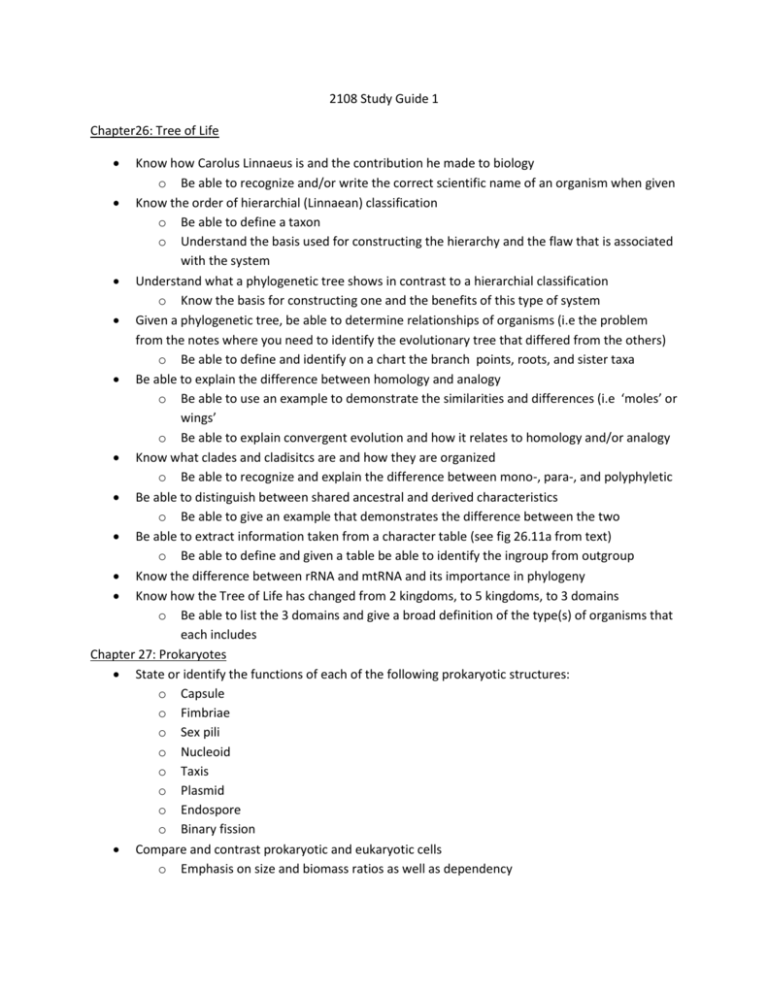
2108 Study Guide 1 Chapter26: Tree of Life Know how Carolus Linnaeus is and the contribution he made to biology o Be able to recognize and/or write the correct scientific name of an organism when given Know the order of hierarchial (Linnaean) classification o Be able to define a taxon o Understand the basis used for constructing the hierarchy and the flaw that is associated with the system Understand what a phylogenetic tree shows in contrast to a hierarchial classification o Know the basis for constructing one and the benefits of this type of system Given a phylogenetic tree, be able to determine relationships of organisms (i.e the problem from the notes where you need to identify the evolutionary tree that differed from the others) o Be able to define and identify on a chart the branch points, roots, and sister taxa Be able to explain the difference between homology and analogy o Be able to use an example to demonstrate the similarities and differences (i.e ‘moles’ or wings’ o Be able to explain convergent evolution and how it relates to homology and/or analogy Know what clades and cladisitcs are and how they are organized o Be able to recognize and explain the difference between mono-, para-, and polyphyletic Be able to distinguish between shared ancestral and derived characteristics o Be able to give an example that demonstrates the difference between the two Be able to extract information taken from a character table (see fig 26.11a from text) o Be able to define and given a table be able to identify the ingroup from outgroup Know the difference between rRNA and mtRNA and its importance in phylogeny Know how the Tree of Life has changed from 2 kingdoms, to 5 kingdoms, to 3 domains o Be able to list the 3 domains and give a broad definition of the type(s) of organisms that each includes Chapter 27: Prokaryotes State or identify the functions of each of the following prokaryotic structures: o Capsule o Fimbriae o Sex pili o Nucleoid o Taxis o Plasmid o Endospore o Binary fission Compare and contrast prokaryotic and eukaryotic cells o Emphasis on size and biomass ratios as well as dependency Describe the structure and composition of prokaryotic cell walls o How to structure and composition effect the gram staining procedure o Explain why gram (-) are more problematic and more resistant to antibiotics than gram (+) Be able to classify prokaryotes based on shape from either pictures or names o Cocci, bacilli, and spirochetes (spiral) List and explain the 3 types of genetic recombination that contribute to the genetic diversity in prokaryotes Distinguish with prokaryotic examples among photoautotrophs, chemoautotrophs, photoheterotrophs, and chemoheterotrophs Explain the difference between obligate aerobes, obligate anerobes, and facultative anaerobes Be able to explain the importance of nitrogen fixation List the 3 domains of life o List the 5 main groups of prokaryotes (and subgroups where applicable) Be able to describe several pathogenic forms of bacteria for each of the groups (subgroups) i.e associate a species’ name with disease/illness/infection and the classification in which it belongs (focus on more common ones) Identify some of the defining characteristics of each Explain the domain archaea and why they are known as extemophiles o Describe distinguishing features of methanogens, halophiles, and thermophiles Distinguish between symbiosis, mutalism, commensalism, and parasitism Distinguis between exo- and endotoxins and be able to give an example of each Chapter 28: Protists Explain the current status of the Kingdom Protista Be able to list/describe the different cellular structures, nutritional strategies, reproduction/life cycles, and ecological habitats that contribute to the diversity in Protists Understand the basic process on endosymbiosis o Be able to explain the origin of mitochondria and chloroplasts in eukaryotic cells Recognize the 5 supergroups of Protists and any associated subgroups o Recognize the defining characteristics of each group (i.e Rhizarians with CaCO3 shell, Brown algae edible with definitive parts (thallus, holdfast, etc.) o Be able to either give an example of a protest found in each or place a protest species into its appropriate group (focus on the more common species) Be able to explain how Trypanosoma and Plasmodium are able to avoid detection by the immune system Now the difference between the 2 types of slime molds Chapter 31: Fungi Be able to identify the differences between cellular structure and nutritional strategies Describe the basic body plan of a fungus o What is the purpose of the mycelium o Explain whether or not fungi are motile List the specializations of hyphae o Be able to explain the difference between ectomycorrizal and arbuscular mycorrhizal fungi Be able to explain the basic components of both sexual and asexual reproduction cycles of fungi o Differences between heterokaryotic and dikaryotic stages Recognize the 5 phyla (and subphyla where applicable) that make up the kingdom fungi o Be able to list/explain defining characteristics of all (special emphasis on reproductive cycles and nutrient attainment) o What is the key characteristic of chytrids o Understand the basics about the reproductive cycle of black bread mold (reference textbook) o Be able to give or classify listed examples into each phyla

